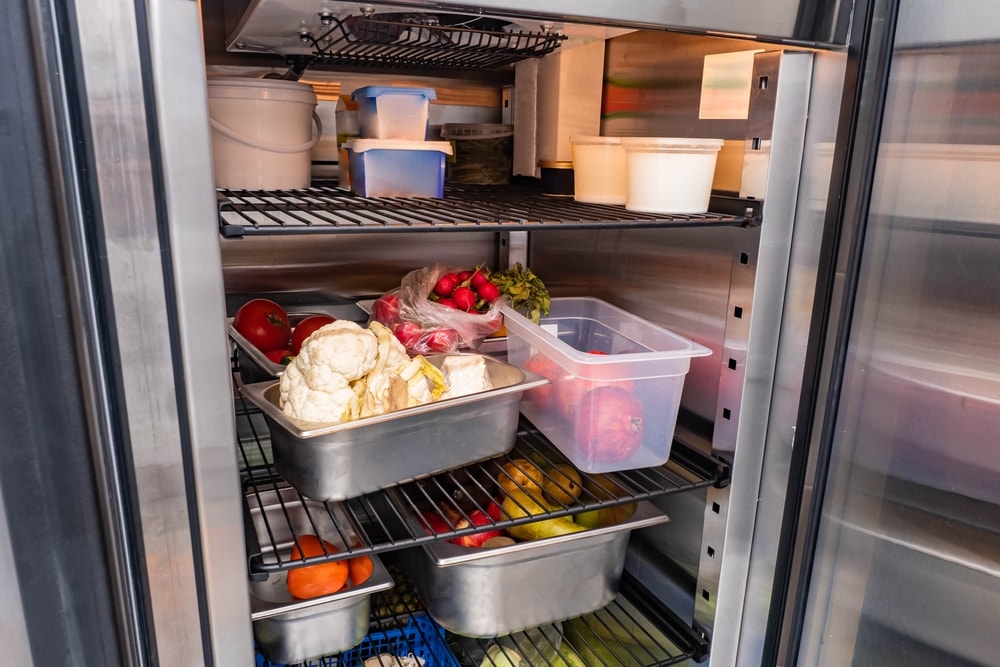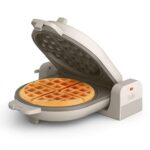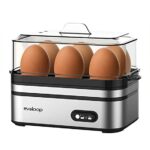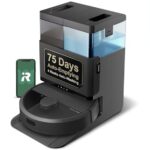Is your refrigerator a chaotic mess? Do you find yourself wasting time hunting for ingredients or, worse, throwing away forgotten food?
If you nodded yes, you’re not alone. Many people struggle with keeping their fridges efficient and organized. But, what if I told you there’s a simple way to transform your fridge from a cluttered nightmare into a streamlined, efficient space?
Imagine opening your refrigerator and finding everything you need right where it should be, saving both time and money. In this guide, we’ll explore practical tips and tricks to help you organize your refrigerator for maximum efficiency. Get ready to discover how a little organization can make a huge difference in your daily life. Keep reading to unlock the secrets of a perfectly organized fridge!

Credit: tatertotsandjello.com
Optimal Shelf Arrangement
Organizing your refrigerator efficiently saves time and reduces waste. Proper shelf arrangement plays a vital role. It ensures easy access to items and maintains freshness. A well-arranged refrigerator can make meal prep stress-free.
Top Shelf: Ready-to-eat Items
Place ready-to-eat foods on the top shelf. Keep leftovers, snacks, and drinks here. This spot is easy to see and reach. It helps you avoid forgetting them.
Middle Shelf: Dairy And Eggs
The middle shelf is perfect for dairy products. Store milk, cheese, and yogurt here. Eggs stay fresh in the carton on this shelf. It maintains a consistent temperature.
Lower Shelf: Raw Meats
Raw meats need the coldest part of the fridge. Use the lower shelf for these. Keep meats in a container to prevent leaks. This reduces the risk of contamination.
Crisper Drawers: Fruits And Vegetables
Crisper drawers control humidity. Store fruits in one drawer. Vegetables go in the other. It keeps produce fresh longer. Avoid mixing fruits with vegetables.
Door Shelves: Condiments And Juices
The door is the warmest part of the fridge. Use it for condiments, juices, and sauces. Arrange them by size for easy access. This keeps the main shelves clutter-free.
Efficient shelf arrangement enhances your refrigerator’s function. It streamlines meal preparation. Enjoy fresh and easily accessible food items.
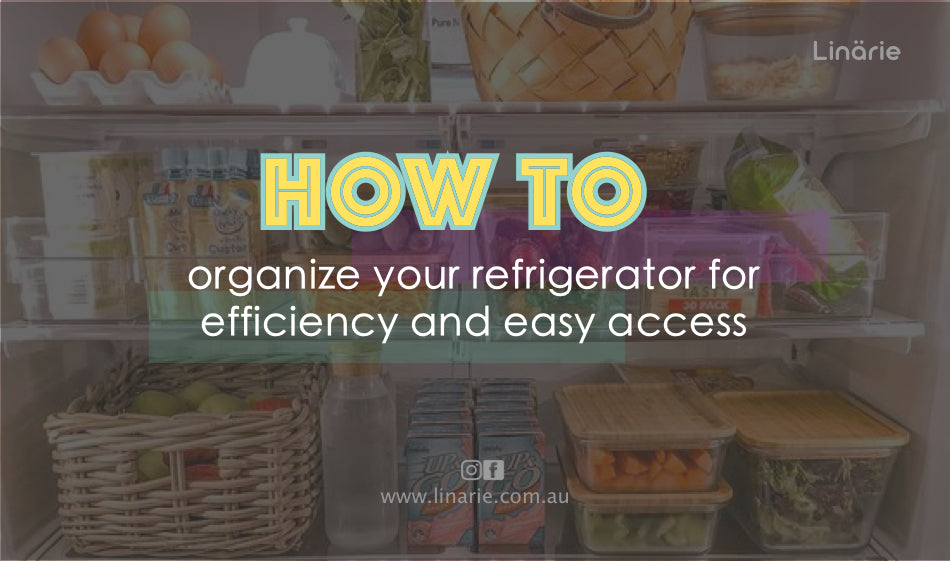
Credit: linarie.com.au
Utilizing Containers And Bins
Have you ever opened your refrigerator only to be greeted by a chaotic jumble of food items? Utilizing containers and bins is the secret weapon to transforming this mess into an organized haven. Not only do these storage solutions help maximize space, but they also ensure that you can easily find what you need.
Choose The Right Containers
Picking the right containers can make a world of difference. Opt for transparent containers so you can see the contents at a glance. Consider different sizes to accommodate varied food items. Stackable designs are perfect for making the most of vertical space. Have you ever spent ages searching for a small jar, only to find it hidden behind a towering stack? Transparent, stackable containers solve this issue.
Categorize Your Food Items
Organize your fridge by categories using bins. Place dairy products in one bin, vegetables in another, and snacks in a separate one. This categorization saves time when you’re preparing meals. Imagine how convenient it is to grab a bin labeled “Breakfast Essentials” rather than scouring through shelves for your yogurt or juice.
Label Everything
Labels are a game-changer in maintaining fridge organization. Use waterproof labels to mark containers and bins clearly. This helps everyone in your household know where things belong. Ever had the frustration of finding leftovers buried at the back of the fridge? Labeled containers prevent this mix-up, ensuring everything is in its rightful place.
Keep Often-used Items Accessible
Reserve prime refrigerator real estate for frequently used items. Store them in front or in easily accessible bins. This way, you won’t have to dig through piles to find what you need daily. Ask yourself: How much time have you wasted searching for your favorite condiment? Placing it front and center eliminates this hassle.
Rotate For Freshness
Use bins to rotate older items to the front, ensuring nothing goes to waste. New items should be placed behind existing ones. This simple strategy keeps your fridge stocked with fresh food. Have you thrown away expired food because you forgot it was there? Bins help keep track of expiration dates, reducing waste.
Utilizing containers and bins not only declutters your fridge but also enhances efficiency in meal preparation. You’ll save time, reduce waste, and enjoy a stress-free kitchen experience. So, what innovative organizing tip will you try next in your fridge?
Temperature Zoning
Temperature zoning is a key strategy in refrigerator organization. It involves storing foods in specific areas based on temperature needs. This method helps preserve food freshness and flavor. It can also reduce food waste. Understanding temperature zones in your refrigerator will optimize its efficiency.
Understanding The Different Temperature Zones
Refrigerators have various temperature zones. Each zone serves a specific purpose. The door is the warmest part. It’s ideal for condiments and juices. The top shelves are slightly cooler. Store ready-to-eat foods here. The middle shelves are cooler still. Perfect for dairy and leftovers. The bottom shelf is the coldest. Best for raw meat and fish.
Optimal Storage For Different Food Types
Each food type has a preferred zone. Raw meats should be on the bottom shelf. This prevents cross-contamination. Dairy and eggs do well on middle shelves. They need consistent cold. Fruits and vegetables belong in the crisper drawers. These drawers control humidity. Bread and other baked goods stay on the top shelf.
Maintaining Consistent Temperatures
Keep your refrigerator at a consistent temperature. Set it to around 37°F (3°C) for the main compartment. Use a thermometer to check regularly. Avoid overfilling the fridge. Air needs room to circulate. Proper air circulation maintains consistent temperatures.
Regularly Review And Adjust
Review your fridge’s organization regularly. Adjust as needed for seasonal foods. Different foods have different needs. Be flexible with temperature zoning. It ensures food stays fresh longer. An organized fridge saves time and energy.
Regular Maintenance Tips
Keeping your refrigerator well-organized doesn’t stop at the initial setup. Regular maintenance is crucial for ensuring efficiency and extending the life of your fridge. By following a few simple tips, you can maintain a clean and efficient refrigerator. This not only preserves your food but also helps save energy.
Check Expiration Dates
Go through your fridge weekly and check expiration dates. Discard any expired items. This frees up space and prevents unpleasant odors.
Wipe Down Shelves And Drawers
Clean shelves and drawers monthly with warm, soapy water. This prevents bacteria and keeps your food safe. Wipe spills immediately to avoid sticky residue.
Inspect The Door Seals
Examine the door seals for cracks or tears. Faulty seals let cool air escape, wasting energy. Replace them if damaged for optimal efficiency.
Organize By Food Group
Group similar items together, like dairy or condiments. This makes finding items easier and reduces the time the door stays open.
Adjust Temperature Settings
Ensure the fridge is set between 37°F and 40°F. Proper settings preserve food longer and save energy.
Clear The Vents
Check and clear vents of any blockages. This allows air to circulate properly, maintaining consistent temperatures.
Defrost The Freezer
Defrost the freezer if ice builds up. Excess ice reduces efficiency and storage space.
Keep It Fresh
Place an open box of baking soda inside. It absorbs odors and keeps the fridge smelling fresh.
Implement these maintenance tips regularly to maintain an efficient refrigerator. It keeps your food fresh and your energy bills low.

Credit: subzerocertifiedrepair.com
Frequently Asked Questions
What Is The Most Efficient Way To Organize A Fridge?
Organize a fridge by placing dairy and eggs on top shelves. Store meats on the lowest shelf. Keep fruits and vegetables in separate drawers. Use the fridge door for condiments and juices. Label items to avoid food waste. Regularly check for expired products to maintain efficiency and freshness.
What Order Should A Refrigerator Be Organized Top To Bottom?
Organize your refrigerator from top to bottom: cooked foods, leftovers, dairy products, eggs, raw meat, and vegetables. Place beverages on the door shelves, and condiments on the middle and lower shelves. Keep fruits separate in dedicated drawers. Maintain cleanliness and check expiration dates regularly.
How To Make A Refrigerator Run More Efficiently?
Keep the refrigerator full to maintain cold temperatures. Clean the coils regularly for better efficiency. Ensure door seals are tight to prevent air leaks. Set temperature to optimal settings: 37°F for fridge, 0°F for freezer. Avoid overloading and allow air circulation inside.
In What Order Should Things Go In The Fridge?
Store ready-to-eat foods on top shelves. Keep raw meat and seafood on lower shelves to prevent contamination. Place dairy and eggs in the middle. Use crisper drawers for fruits and vegetables. Store condiments in the fridge door for easy access.
Conclusion
An organized refrigerator saves time and reduces food waste. Keep similar items together for easy access. Use clear containers to see contents quickly. Adjust shelves to fit tall or bulky items. Label everything for quick identification. Check expiry dates to ensure freshness.
Clean regularly to maintain hygiene. An efficient fridge setup makes cooking simple. You’ll find meals easier to plan and prepare. Start organizing today for a stress-free kitchen experience. Enjoy the benefits of a tidy fridge. Happy organizing!

